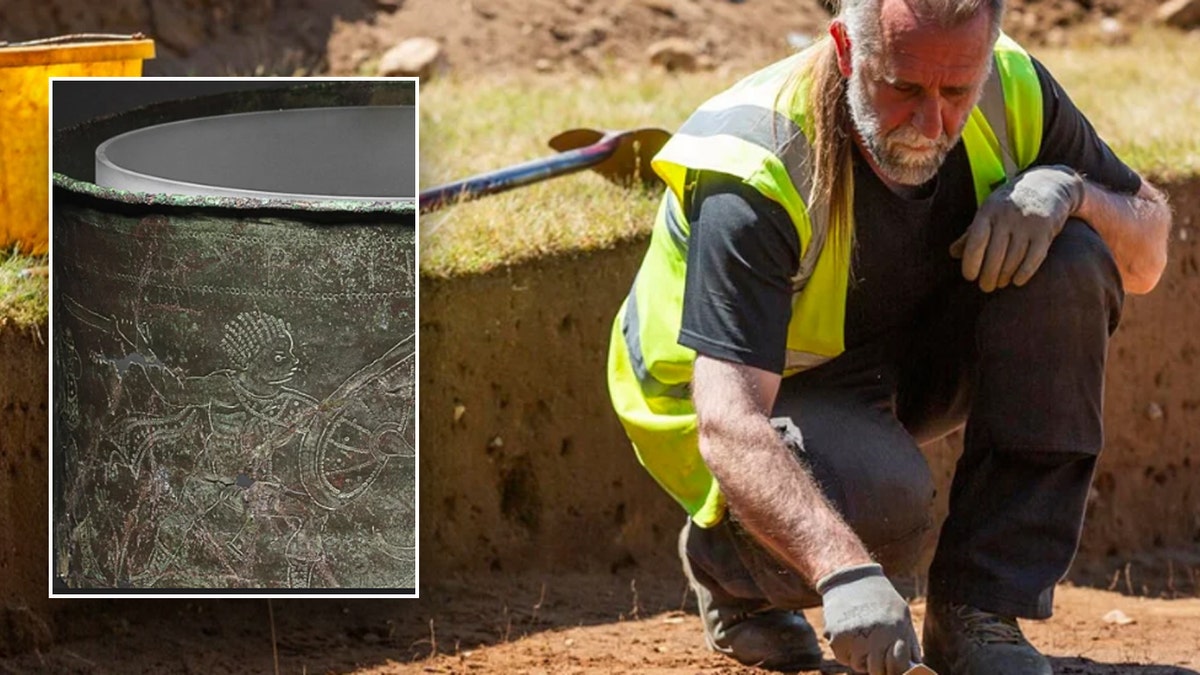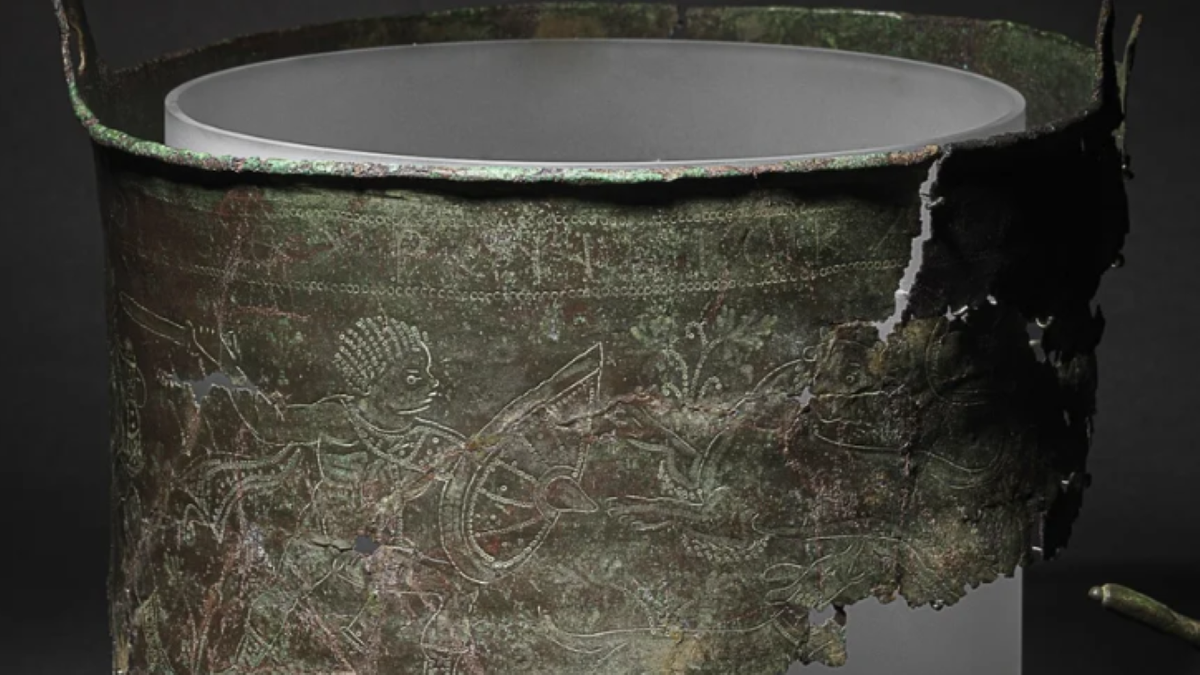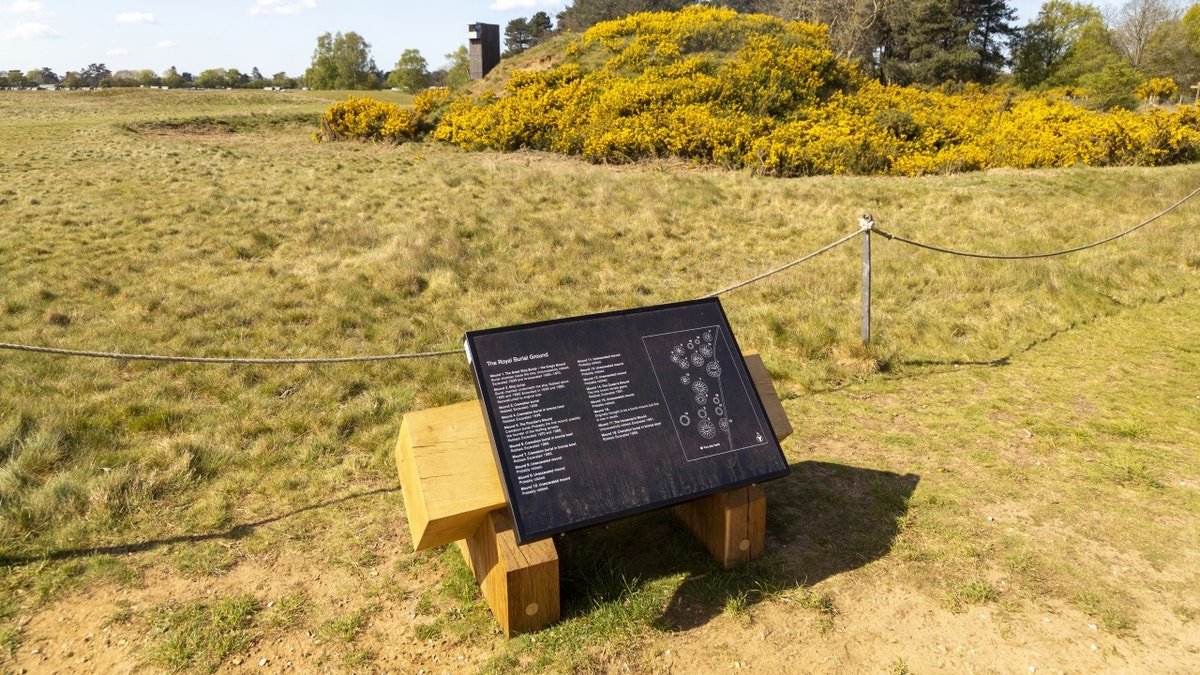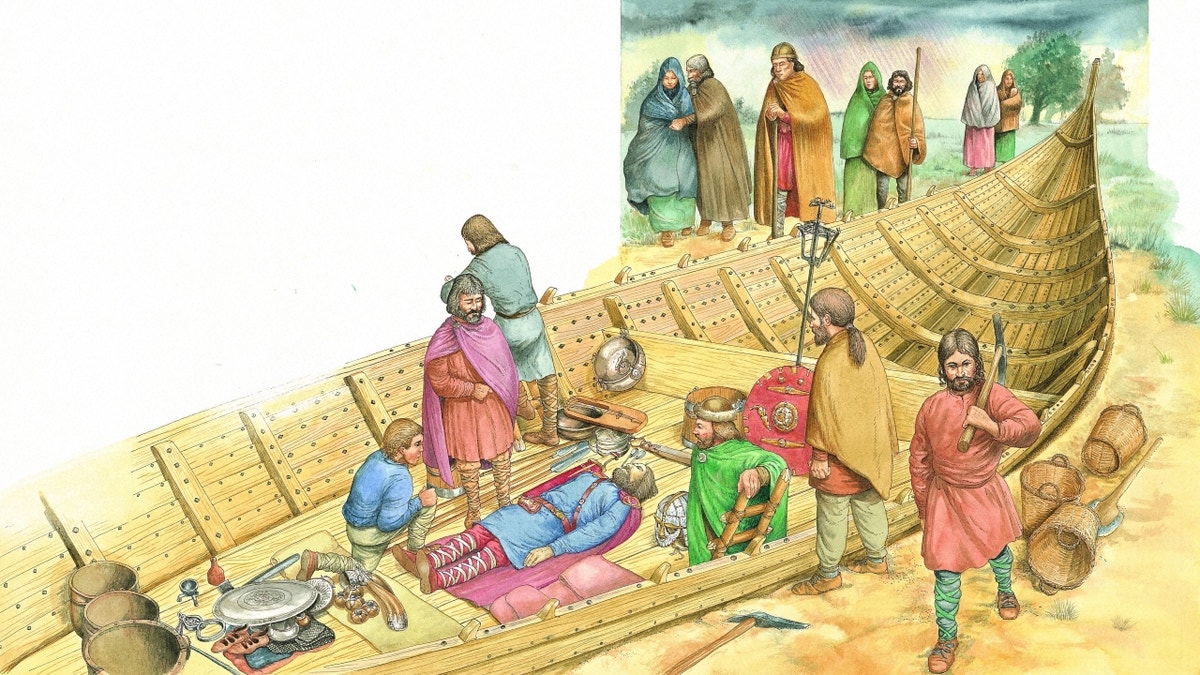Mysterious 1,500-year-old Byzantine bucket at Sutton Hoo held cremated remains
Archaeologists recently discovered the purpose of a mysterious 1,500-year-old bucket at one of England’s most historic sites – and it wasn’t pleasant.
The National Trust released a statement about the Byzantine Bromeswell bucket, found at Sutton Hoo, in May.
The site of two ancient Anglo-Saxon cemeteries, Sutton Hoo has offered a wealth of knowledge about pre-Norman British history since its first excavation in 1938.
During an excavation last summer, archaeologists unearthed the base of the Bromeswell bucket, which dates back to the 6th century. Different fragments of the bucket were uncovered in past excavations, but this latest discovery gave researchers more to study.
With the base in hand, researchers quickly went to work to analyze the artifact with a variety of techniques, including computerized tomography, CT scans and X-rays – and they found an answer.

Archaeologists recently discovered the purpose of a 6th-century Byzantine Bromeswell bucket found at Sutton Hoo, the site of two cemeteries. (National Trust Images / David Brunetti / James Dobson)
In a morbid turn of events, experts learned the bucket was used to hold the cremated remains of an important person, and their grave goods.
“The cremated human and animal bones uncovered confirm the find was used as a cremation vessel,” the National Trust noted.
The organization added, “Cremated human bones included parts of a talus (ankle bone) and fragments of a skull vault (the upper part of the skull that protects the brain).”
“It’s a remarkable mixture – a vessel from the southern, classical world containing the remains of a very northern, very Germanic cremation.”
The bucket dates back to the 500s. It’s decorated with a hunting scene depicting men armed with swords and shields, as well as dogs and lions – painting a vivid picture of life in the past.
“The latest fragments include feet, paws, the base of shields and even the missing face of one of the men,” the statement described.

The bucket originated from Antioch in the Byzantine Empire in the 500s. (National Trust Images / David Brunetti)
It is believed the bucket came from Antioch in the Byzantine Empire, now located in modern Turkey.
The National Trust noted, “Letterforms used within the bucket’s design suggest it was made in the 6th century, meaning it was already 100 years old when it arrived here at Sutton Hoo.”
Researchers also found “a mystery object” that turned out to be a double-sided comb made from an antler. Interestingly, the object had not been burned.
LATE BRONZE AGE SETTLEMENT DATING BACK 3,000 YEARS UNCOVERED AMID ROAD WORK: ‘IMPORTANT DISCOVERY’
The National Trust said the presence of the comb suggests the Anglo-Saxons took grooming seriously, as combs have been found in male and female burials before.
“Slightly less romantically, combs also would have been useful in the control of lice,” the statement said. “Although the human bone in the cremation couldn’t be sexed, it’s hoped that ancient DNA from the owner might survive on the comb, and analysis could reveal more about them.”

Sutton Hoo has offered a wealth of knowledge since its first excavation in 1938. (Getty Images)
National Trust archaeologist Angus Wainwright said that he was “hopeful” future research will uncover new insight into “this very special burial.”
For more Lifestyle articles, visit foxnews.com/lifestyle
“We knew that this bucket would have been a rare and prized possession back in Anglo-Saxon times, but it’s always been a mystery why it was buried,” Wainwright said.
“Now we know it was used to contain the remains of an important person in the Sutton Hoo community.”
CLICK HERE TO SIGN UP FOR OUR LIFESTYLE NEWSLETTER
Anglo-Saxon expert Helen Geake told the National Trust the puzzle of the Bromeswell bucket has “finally” been solved.
“It’s always been a mystery why it was buried.”
“Now we know that it is the first of these rare objects ever to have been used in a cremation burial,” she said.
“It’s a remarkable mixture – a vessel from the southern, classical world containing the remains of a very northern, very Germanic cremation.”

A depiction of a burial at Sutton Hoo during the Anglo-Saxon period is shown. (Getty Images)
She also said the find “epitomizes the strangeness” of Sutton Hoo, which has captivated British history enthusiasts for decades.
CLICK HERE TO GET THE FOX NEWS APP
“It has ship burials, horse burials, mound burials and now bath-bucket burials,” Geake observed.
“Who knows what else?”





